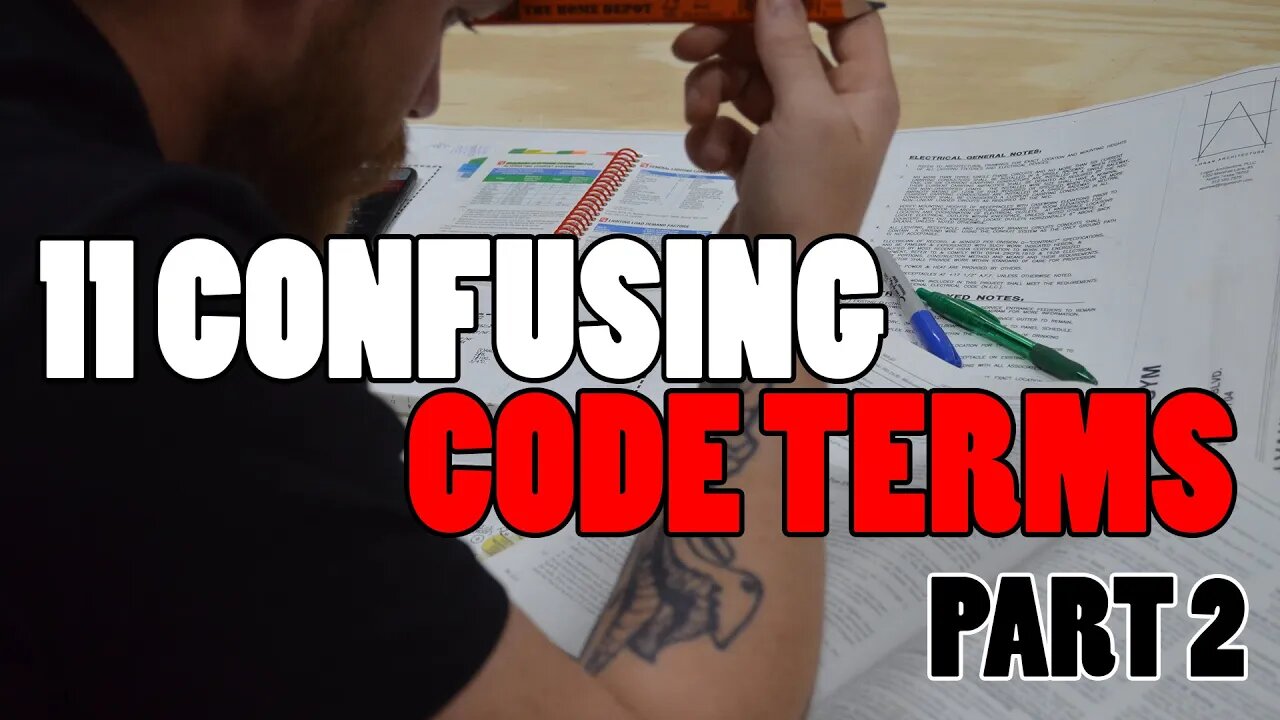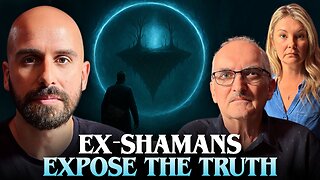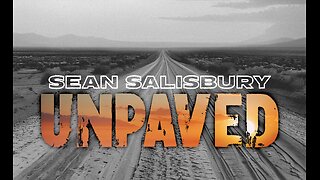Premium Only Content

11 MORE confusing electrician code terms - UNDERSTANDING THE NEC (PART 2)
Let’s face it…the national electric code book is probably the most difficult construction document to read and understand. It’s written like a court document in legalese, using terms none of us use in the field, for the sake of liability and C.Y.A. These are 11 terms that are used in the NEC that I feel people struggle with understanding when they first buy a code book.
👾🤖PRACTICE EXAMS🤖👾
https://www.electricianu.com/practice-exams
😎👕MERCH👕😎
https://www.electricianu.com/merchandise
📲👥SOCIALS👥📲
Instagram - https://www.instagram.com/electrician_u
Discord - https://discord.gg/7ykYfbh
Facebook Page - https://www.facebook.com/theelectricianu
Facebook Group - https://bit.ly/2tz7eQh
TikTok - https://www.tiktok.com/@electricianu
#1 - BRANCH CIRCUIT
Branch circuits are the most common circuits that we deal with on a daily basis. Branch circuits are the conductors that begin at the last breaker (over-current device) and end at an outlet. Remember from PART 1 of this series that an outlet is not a receptacle, it is a place where power is “taken” from for equipment. You may have multiple electrical panel-boards that have multiple branch circuits coming out of them. Branch circuits come from breakers, but do not feed other breakers. They only feed outlets.
#2 - MULTI-WIRE BRANCH CIRCUIT
Multi-wire branch circuits are similar to standard branch-circuits in that they originate at a breaker and feed outlets. However they differ becuse they have 2 or more circuits in the same cable assembly/conduit. An example of this is 12/3 MC cable. 12/3 has 2 hot (ungrounded) conductors feeding from 2 breakers on different phases, both independent circuits, and a neutral (grounded) conductor all in the same run. Both hots share one neutral. Another example is 12/4 NM (Romex) cable. 12/4 has 3 hots, and one neutral. The benefit of this cable is that several circuits can be run in one cable, rather than running several different cables.
#3 - FEEDERS
Feeders are one step back from branch-circuits when thinking about a typical electrical system. They are the conductors between the service disconnect and the next panel in the series. This includes anything along that run that is intercepted by equipment such as transformers, disconnects, etc. Feeders go from a breaker to another breaker, including any portion going to anything in-between. Really feeders are everything that is not a branch circuit, or a service-entrance conductor.
#4 - SERVICE-ENTRANCE CONDUCTORS
Service-entrance conductors are those that tie into the utility service-point, in either an overhead or underground service, and run to the main disconnect at the service. These are the first conductors run to a building/structure that we deal with as an electrician. From this main disconnect, any conductors that leave this service panel are either feeders or branch circuit conductors. Many people mistakingly call appliance conductors for furnaces and ac’s feeders, however these are still branch circuits. Feeders begin at a breaker and end at a breaker.
#5 - GROUNDING ELECTRODE
Grounding electrodes are conductive materials installed in the earth, that help to form a bonded connection between earth and the electrical system. They have a conductor (grounding electrode conductor) that bonds the electrode with the equipment grounding conductors and neutrals (grounded conductors) at the service. It’s extremely important that all of these components are bonded together to keep all of them at the same potential. Grounding electrodes can be many different things, including ground-bars, ground-plates, metal water-piping, and rebar in a concrete slab.
CONTINUE READING FULL ARTICLE AT: https://www.electricianu.com/podcast/episode-40-11-more-confusing-code-terms-understanding-the-nec-part-2
#nec #code #electrical
--
Subscribe - https://www.youtube.com/c/electricianu?sub_confirmation=1
IF YOU ENJOY THESE VIDEOS PLEASE SUBSCRIBE AND "LIKE" THEM ABOVE. ALSO CHECK OUT THE ELECTRICIAN U PODCAST ON ITUNES AND SPOTIFY!!
-
 0:57
0:57
Electrician U
1 year agoMy FAVORITE Tester for Electricians - What Hand Tools Are YOU Missing
5.78K -
 1:08:34
1:08:34
DeVory Darkins
4 hours agoDHS announces Major SHAKE UP as Air Traffic Controllers drop ULTIMATUM for Congress
134K91 -
 LIVE
LIVE
StoneMountain64
7 hours agoBattlefield REDSEC Battle Royale GAMEPLAY & 1st Impressions (Free to Play LAUNCH DAY)
108 watching -
 LIVE
LIVE
Dad Saves America
23 hours agoDigital ID Starts With “Protecting Kids.” It Ends With China’s Social Credit Score.
29 watching -
 LIVE
LIVE
LFA TV
20 hours agoLIVE & BREAKING NEWS! | TUESDAY 10/28/25
1,307 watching -

VapinGamers
5 hours agoTools of the Trade - EP09 The One About Comedy with Lou Perez - !rumbot !music
2.16K1 -
 3:23:22
3:23:22
The Confessionals
5 hours agoThey Crossed Realms Doing Soul Retrievals (and paid the price)
1.71K2 -
 2:13:39
2:13:39
Badlands Media
14 hours agoGeopolitics with Ghost Ep. 52 - October 28, 2025
31.6K5 -
 1:10:07
1:10:07
Sean Unpaved
5 hours agoFreddie's Epic Midnight Walk-Off, Saturday's Coaching Carnage, & NFL Weekend 8 Recap
30.1K -
 9:57
9:57
Neil McCoy-Ward
6 hours agoI Walked Into Something I Shouldn’t Have (London)
12.2K18